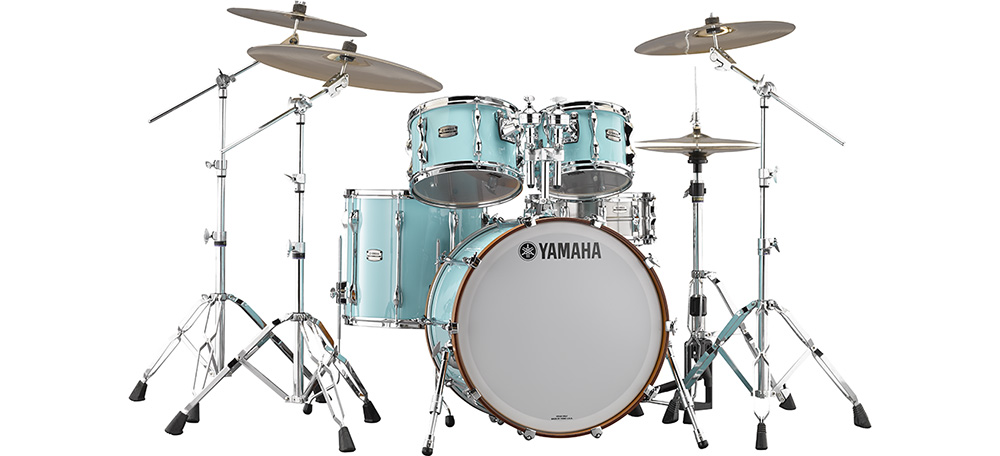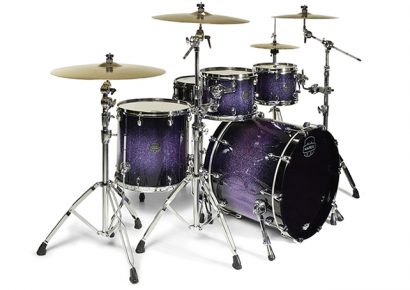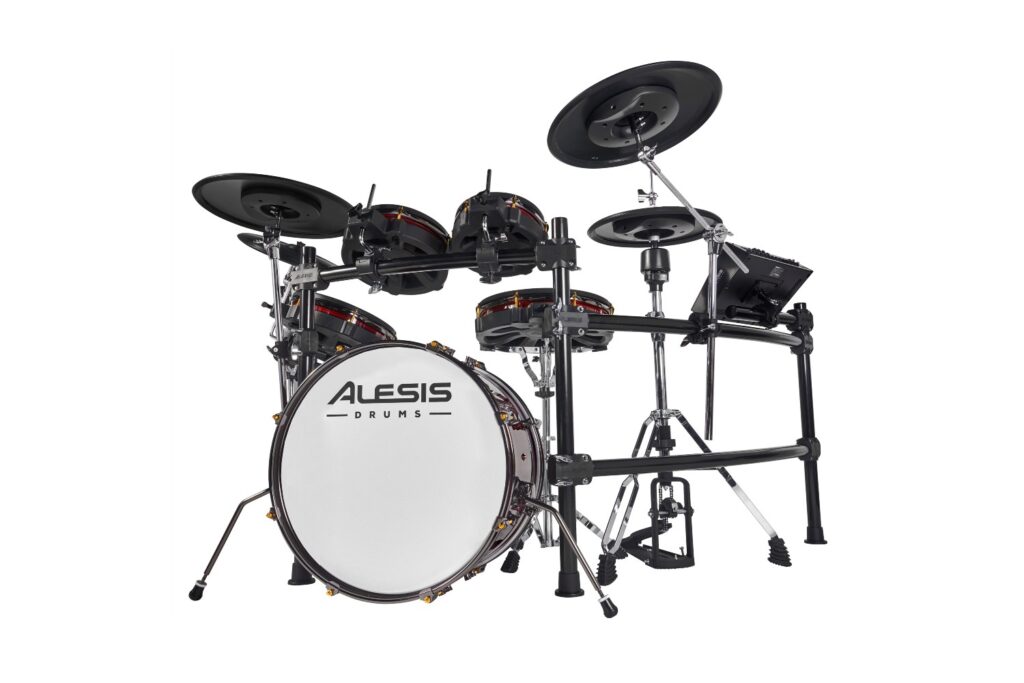WHAT’S IN A NAME?
Originally known as the YD9000 series, the Recording Custom got its current name because of its reputation in the studio as the ‘recording choice’ with a controlled sound, particularly when close mic’d – as was the favoured thing in the day after the roomy sounds of the 60s. The RC is probably the most recorded set of drums in history and is the company’s longest running line of drums since 1977. Drummers that have encountered or played a Recording Custom will know ‘the sound’ and may feel apprehensive about the model being reintroduced, but I got to try the newly updated drums recently and we can rest easy people. Things are very ok.
STEVE GADD/DIFFERENCES
Yamaha teamed up with the legendary Steve Gadd and worked for three years on the re-release of the new Recording Custom. It was important to bring the drums into the modern era whilst retaining the things that made them so famous and loved in the first place. The 6ply shells are 100% North American birch with a 30-degree bearing edge and one-piece lugs. The consensus was the 6ply shell yielded the best balance of low-end frequencies and volume. Gadd also was heavily influential with the bass drum and a line of snare drums, of which, there are three materials available – brass, stainless steel and aluminium – more on this later. The drums are available in four finishes – solid black, real wood (natural), classic walnut and surf green.
Some differences that the purists might notice are new issue badges and weighted lugs – a little wider, but still extended to the length of the drums as with the previous model. The lugs are weighted to enhance lower frequencies without having to further alter the thickness whilst adding rigidity overall. It allows for a thin shell without a loss of clarity across the tuning range. Another suggestion from Gadd was to add a riser to the 20” bass drum so the beater strikes dead centre. Yamaha have analysed this and there’s more low-end compared with off centre. It won’t be everyone’s preference but it’s not a bad thing. Some drummers may also lament the loss of the painted interior of the shells – replaced with a stain to show off the grain of the wood.
SOUNDS
I got to try two configurations of the new Recording Custom – the classic ‘Gadd’ 6-piece in solid black – 10×7” (slightly shorter than previously), 12×8”, 14×12”, 16×15” and a 20×16” bass drum with riser, as well as a super cool surf green 4-piece with a massive 24×14” bass drum. As with any Yamaha, the set up feels really good. The quality hardware allows for precise adjustments and even though the bass drum is lifted, it feels no higher than a 22” so for most players, it’ll be natural.
The first thing that strikes you about the sound is the control. Win. The drums have the same characteristics of old – there’s a focus to the sound – even wide open. Curiously, the drums I tried had factory single ply heads so I expected a range of overtones and carrying on that you’d normally get on say, a brighter maple kit. The combination of birch, those lugs and a standard YESS mount gives that shorter, slightly dry and dare I say it, EQ’d sound. I tried a minimal amount of dampening too and it just got better. I really like a dampened drum sound and compared to that of a Maple Custom, I barely needed anything. That said, the tone and sustain is still there. You can have it both ways. Geez, no wonder the Recording Customs were popular in the day.
The floor toms too had real presence and fullness, even with single ply heads tuned lower. I can only imagine the kit with double ply heads – I’d be keen to hear. As mentioned, the bass drum is on a riser. Holy hell did this thing surprise me. To be frank, it sounded like a 22” and had so much low-end love. All the drums are easily tuned up or down but the bass drum responded so easily to minimal alterations. Even with nothing in it, there’s that control – a lovely thing. The 24” just took it to another level – the shorter depth adding more punch. So good!
SNARES
I tried three variants of the new snares – all of which, Gadd was involved with. Curiously, there’s no birch offering but the metal snares have the same ethos as the rest of the kit, so the control remains. All shells also have the one-piece lug and for the first time, the metal centre bead on the exterior of the shell instead of inside promoting a more open sound. The aluminium snare is Steve’s usual choice and as such you can get his staggered 10-strand wires to use instead of the regular 20-strand. A nice thing is that the hoops are also aluminium making for a light drum. The sound is short and a little vintage. Tuning range is awesome on this drum. The 13×6.5 brass offered some great cut and a brighter tone overall, whilst the 14×6.5 stainless gave depth and a wide, more traditional deep snare sound. All are cool in their own way.
So is the new Recording Custom a success? Yes it is. It looks great, sounds predictably fantastic and will appeal to many drummers. Downsides? Besides the riser that is screwed into the hoop, the only other negative is price. You don’t get awesome for super cheap. The Recording Custom is a top-end kit and won’t be affordable for everyone but this can’t take away from the fact that they’re great drums at the top of the Yamaha family. The new Recording Custom is my pick of the Yamaha range at the moment hands down.
For more details on Yamaha products, head to au.yamaha.com.


